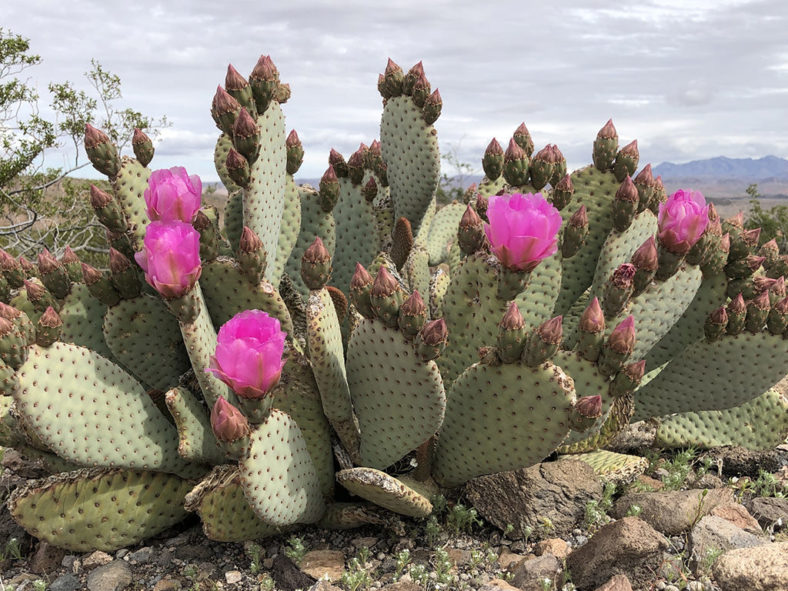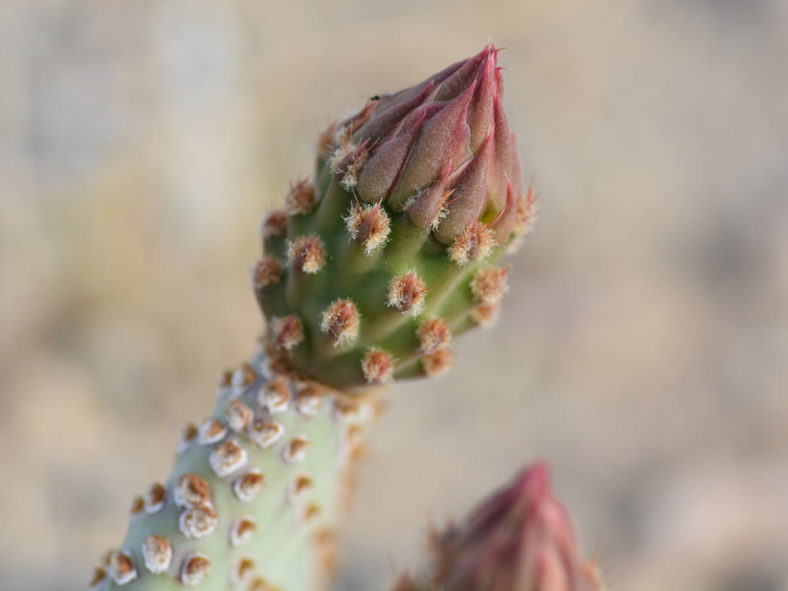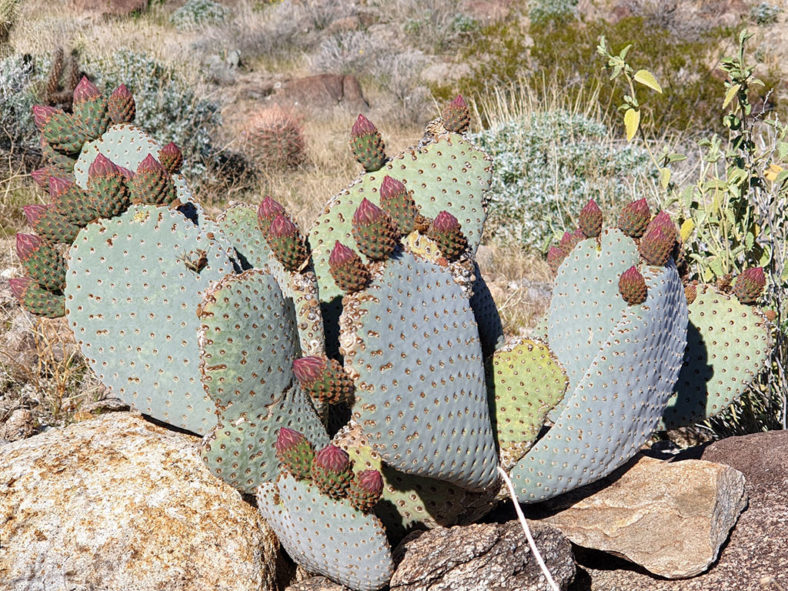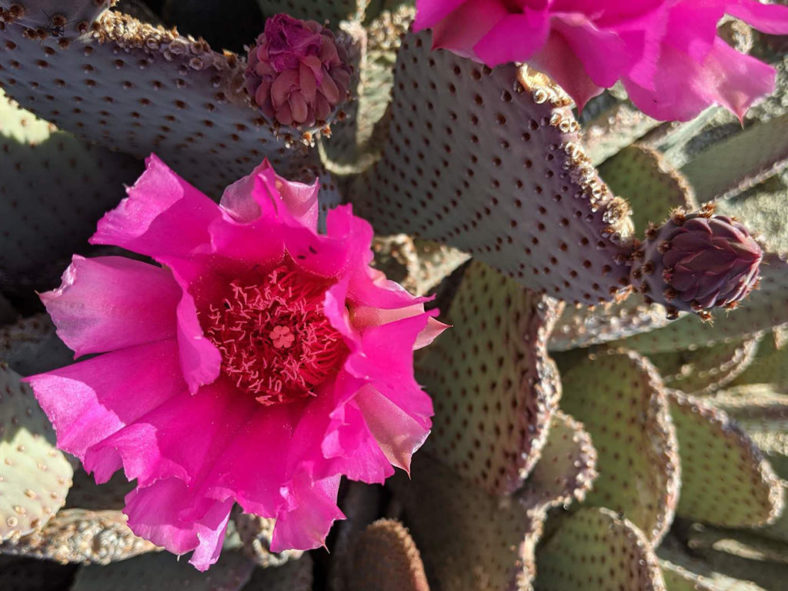Opuntia basilaris is a highly variable species with several names described under different ranks. However, only four varieties are generally accepted.
Scientific Name
Opuntia basilaris Engelm. & Bigelow
Common Name(s)
Beavertail Cactus, Beavertail Prickly Pear
Synonym(s)
Opuntia basilaris var. basilaris
Scientific Classification
Family: Cactaceae
Subfamily: Opuntioideae
Tribe: Opuntieae
Genus: Opuntia
Etymology
The specific epithet "basilaris (pronounced bas-il-LAIR-iss)" means "basilar, basal, of or located at a base of something" and refers to the new stem segments of this species that grow mainly from the base of older ones.
Origin
Opuntia basilaris is native to the southwestern United States (California, Nevada, Arizona) and northwest Mexico (Baja California and Sonora). It occurs in the Sonoran and the Mojave Desert at elevations below 3,000 feet (915 m).
Description
Opuntia basilaris is a shrubby cactus with sprawling to ascending or erect stems that consist of flattened, nearly smooth segmented joints known as pads. It can grow up to 16 inches (40 cm) tall and typically branches from the base. The pads vary in color from blue-green to yellow-green, sometimes with a maroon-purple tint. They are thick, fleshy, and can be spatula-shaped to inversely ovoid or nearly circular, measuring up to 14 inches (35 cm) in length and 6.4 inches (16 cm) in width. The areoles of the pad bear numerous glochids and no spines. The glochids range in color from yellow to red-brown or dark brown.
During spring and early summer, Opuntia basilaris produces striking flowers with pink to magenta tepals, red-magenta filaments, and yellowish anthers. The flowers appear on the upper terminal margins of pads and can reach up to 2.4 inches (6 cm) in length and 2 inches (5 cm) in diameter. The fruits are edible, spherical to inversely ovoid, tan in color, and dry at maturity. They contain yellowish to tan seeds and can grow about 1.6 inches (4 cm) in diameter.

How to Grow and Care for Opuntia basilaris
Light: Opuntia basilaris thrives in full sun, but some shade during midday and afternoon can prevent sunburn in hot climates. When grown indoors, it works best in a window that receives sunlight for 6 hours a day.
Soil: This cactus requires a well-draining soil mix. You can use a commercial cactus potting mix or create your own.
Temperature: Opuntia basilaris is highly tolerant of high temperatures and prefers cooler temperatures in winter. It grows best in USDA Plant Hardiness Zones 8a to 10b, with average minimum winter temperatures ranging from 10 to 40 °F (-12.2 to 4.4 °C).
Watering: From spring to fall, water moderately and let the soil dry out completely before watering again. In most areas, rainfall will be enough for established plants. If potted, never let the container sit in water. Suspend watering during the winter.
Fertilizing: Opuntia basilaris does not need fertilizer when planted in the ground. However, it will benefit from fertilizing during the growing season when grown in a container. Apply a water-soluble fertilizer. Suspend feeding during the winter when the plant goes dormant.
Repotting: Repot only when the cactus becomes potbound or is too large and unstable in its container. Choose a slightly larger container with drainage holes at the bottom. The best time for repotting is late winter or early spring.
Propagation: Opuntia basilaris can be propagated using either stem segments or seeds. The easiest method is to use stem segments, which provide quicker results. For best results, take stem segments in early summer and sow the seeds in late spring.
Learn more at How to Grow and Care for Opuntia.
Toxicity of Opuntia basilaris
Opuntia basilaris is not toxic to humans or pets. However, keep the plant away from pets and children as it has harmful spines and glochids that may cause skin irritation.
Varieties of Opuntia basilaris
Links
- Back to genus Opuntia
- Succupedia: Browse succulents by Scientific Name, Common Name, Genus, Family, USDA Hardiness Zone, Origin, or cacti by Genus
Photo Gallery
Click on a photo to see a larger version.


